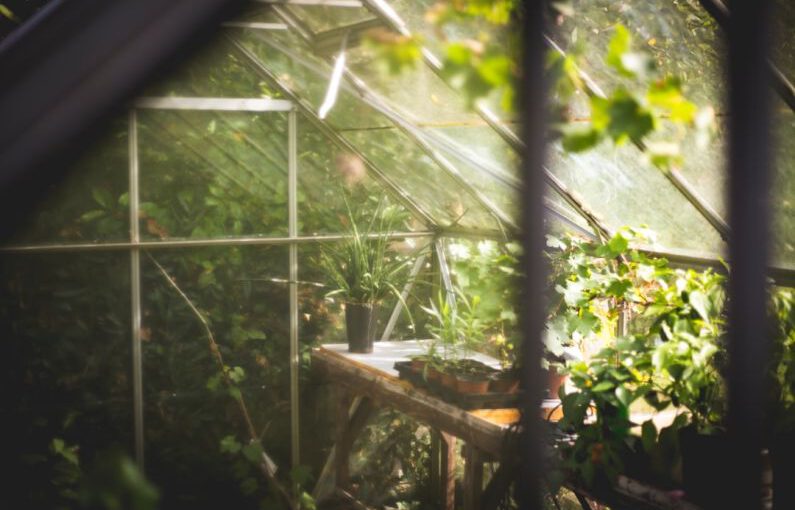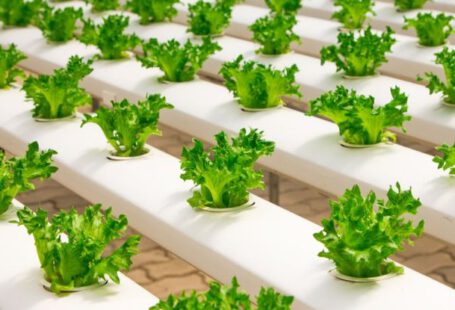Extending Your Grow Season with Greenhouse Planting
As a gardener, you are always looking for ways to maximize your yield and extend your growing season. One effective method to achieve this is by utilizing a greenhouse. Greenhouses provide a controlled environment that can protect your plants from harsh weather conditions, pests, and diseases, allowing you to grow a wider variety of crops for a longer period. In this article, we will explore how you can make the most of your greenhouse to extend your grow season and enjoy fresh produce throughout the year.
Choosing the Right Location for Your Greenhouse
The location of your greenhouse plays a crucial role in its effectiveness. It is important to place your greenhouse in an area that receives plenty of sunlight throughout the day. South-facing locations are ideal as they receive the most sunlight exposure. Additionally, make sure your greenhouse is easily accessible for watering, ventilation, and maintenance. Consider factors such as wind protection and proximity to a water source when selecting the location for your greenhouse.
Optimizing Temperature Control
Maintaining the right temperature inside your greenhouse is essential for the health and growth of your plants. In colder months, you can use heaters or thermal mass such as water barrels to keep the temperature warm during the night. Conversely, in hot weather, proper ventilation and shading are key to preventing your plants from overheating. Automatic ventilation systems and shade cloths can help regulate the temperature inside the greenhouse, ensuring optimal growing conditions for your plants.
Utilizing Season Extension Techniques
To extend your grow season even further, you can employ various season extension techniques in your greenhouse. One effective method is to use row covers or cloches to protect your plants from frost and cold temperatures. These simple coverings can provide an extra layer of insulation and help your plants thrive in cooler weather. Additionally, you can plant cold-hardy crops that can withstand lower temperatures, allowing you to continue harvesting fresh produce well into the fall and winter months.
Implementing Crop Rotation and Succession Planting
Crop rotation and succession planting are essential practices for maximizing the productivity of your greenhouse. By rotating your crops seasonally, you can prevent soil depletion and reduce the risk of pests and diseases. Succession planting involves planting new crops as soon as one harvest is finished, ensuring a continuous supply of fresh vegetables throughout the year. Be strategic in your planting schedule to make the most of your greenhouse space and prolong your growing season.
Investing in Seasonal Varieties and Heirloom Seeds
When planning your greenhouse garden, consider investing in seasonal varieties and heirloom seeds that are well-suited for your climate and growing conditions. These plants are often more resilient and better adapted to local weather patterns, allowing them to thrive in your greenhouse environment. By selecting the right varieties, you can increase your chances of a successful harvest and enjoy a diverse range of fresh produce throughout the year.
Maximizing Space with Vertical Gardening
Vertical gardening is a space-saving technique that can help you maximize the growing capacity of your greenhouse. By utilizing trellises, hanging baskets, and vertical planters, you can grow more plants in a limited area and make the most of your greenhouse space. This method is especially useful for vining crops such as tomatoes, cucumbers, and beans, which can be trained to grow upwards, saving valuable ground space for other crops.
Enhancing Soil Health and Nutrient Levels
Maintaining healthy soil is essential for the long-term success of your greenhouse garden. Regularly amend your soil with organic matter such as compost, manure, or worm castings to improve its structure and nutrient content. Consider conducting soil tests to monitor the pH levels and nutrient concentrations in your soil, and adjust your fertilization practices accordingly. Healthy soil is the foundation for healthy plants, so investing in soil health will pay off in the form of abundant harvests year after year.
Conclusion: Cultivating a Year-Round Garden in Your Greenhouse
In conclusion, extending your grow season with greenhouse planting is a rewarding endeavor that allows you to enjoy fresh produce year-round. By choosing the right location, optimizing temperature control, utilizing season extension techniques, practicing crop rotation and succession planting, investing in seasonal varieties, maximizing space with vertical gardening, and enhancing soil health, you can create a thriving greenhouse garden that provides a bountiful harvest in every season. With careful planning and attention to detail, you can make the most of your greenhouse and cultivate a diverse array of crops throughout the year. So, roll up your sleeves, get your hands dirty, and start extending your grow season with greenhouse planting today!





